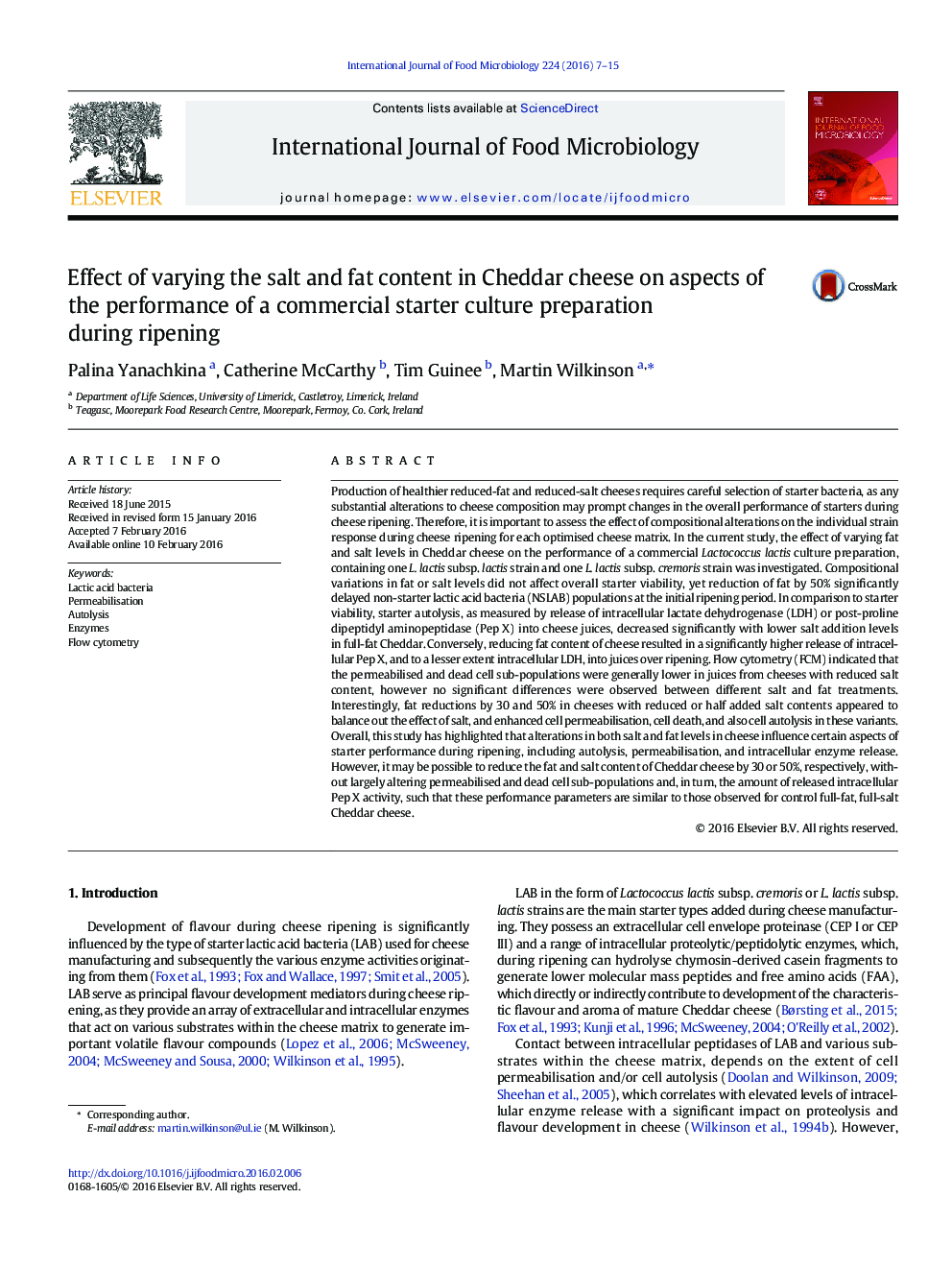| کد مقاله | کد نشریه | سال انتشار | مقاله انگلیسی | نسخه تمام متن |
|---|---|---|---|---|
| 4366275 | 1616559 | 2016 | 9 صفحه PDF | دانلود رایگان |
• Fat and salt content in Cheddar cheese was reduced by 30 and 50%.
• The performance of commercial cheese starter was studied over 56 days of ripening.
• Compositional alterations in fat and salt levels had no effect on starter viability.
• Reducing salt levels resulted in lower starter permeabilisation and cell autolysis.
• Decreasing fat content in lower-salt cheeses enhanced intracellular enzyme release.
Production of healthier reduced-fat and reduced-salt cheeses requires careful selection of starter bacteria, as any substantial alterations to cheese composition may prompt changes in the overall performance of starters during cheese ripening. Therefore, it is important to assess the effect of compositional alterations on the individual strain response during cheese ripening for each optimised cheese matrix. In the current study, the effect of varying fat and salt levels in Cheddar cheese on the performance of a commercial Lactococcus lactis culture preparation, containing one L. lactis subsp. lactis strain and one L. lactis subsp. cremoris strain was investigated. Compositional variations in fat or salt levels did not affect overall starter viability, yet reduction of fat by 50% significantly delayed non-starter lactic acid bacteria (NSLAB) populations at the initial ripening period. In comparison to starter viability, starter autolysis, as measured by release of intracellular lactate dehydrogenase (LDH) or post-proline dipeptidyl aminopeptidase (Pep X) into cheese juices, decreased significantly with lower salt addition levels in full-fat Cheddar. Conversely, reducing fat content of cheese resulted in a significantly higher release of intracellular Pep X, and to a lesser extent intracellular LDH, into juices over ripening. Flow cytometry (FCM) indicated that the permeabilised and dead cell sub-populations were generally lower in juices from cheeses with reduced salt content, however no significant differences were observed between different salt and fat treatments. Interestingly, fat reductions by 30 and 50% in cheeses with reduced or half added salt contents appeared to balance out the effect of salt, and enhanced cell permeabilisation, cell death, and also cell autolysis in these variants.Overall, this study has highlighted that alterations in both salt and fat levels in cheese influence certain aspects of starter performance during ripening, including autolysis, permeabilisation, and intracellular enzyme release. However, it may be possible to reduce the fat and salt content of Cheddar cheese by 30 or 50%, respectively, without largely altering permeabilised and dead cell sub-populations and, in turn, the amount of released intracellular Pep X activity, such that these performance parameters are similar to those observed for control full-fat, full-salt Cheddar cheese.
Journal: International Journal of Food Microbiology - Volume 224, 2 May 2016, Pages 7–15
